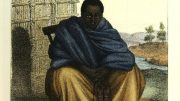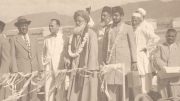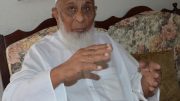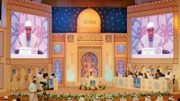With absolute certainty, there were tens of thousands of Muslims amongst all Africans enslaved in the Caribbean, and Latin, Central, and North America. Writing to the Jamaican Gleaner, Maureen Warner-Lewis, observed:
There is no doubt that there were Muslims among the enslaved brought to the Caribbean. My oral interviews in the 1960s with Trinidadian descendants of such persons bore testimony to this, findings which were published in the African Studies Association of the West Indies Bulletins 5 and 6 (1972, 1973), later republished in my Guinea’s Other Suns’ (1991). These fore-parents had come from the Hausa, Fulani, Yoruba, and Mandingo ethnic groups of West Africa. Of these groups, the Mandingo of the Senegambia region were most associated with Islam. The religious ideas of these Muslims as well as the writing skills in Arabic which several of them possessed had in fact caught the attention of European planters, among them Jamaican-based Bryan Edwards (1819).
In fact, their numeracy and writing skills allowed them to secure jobs as storekeepers and tally clerks on estates. But many of the Africans who had come into contact with Islam before migrating were not literate in Arabic, and it is the literacy of those who belonged to families of established Muslim priests and scholars which most readily attracted the attention of European commentators.
ATTENDED MUSLIM SCHOOLS
Having attended Muslim schools, they were able to recite short or long sections of the Koran, as well as write Arabic words and letters. Indeed, Jonas Mohammed Bath of Port of Spain, Trinidad, wrote several petitions in English and Arabic during the 1830s on behalf of other Muslims who wished to be repatriated to their native lands.
In a 1974 article, Carl Campbell set out the life story of Mohammedu Sisei of the Gambia, who had arrived in Trinidad as a demobilised West India Regiment soldier in 1816 and who, through the agency of the Royal Geographical Society of England did return to the Gambia.
In an almost similar vein, Magistrate R. R. Madden of Jamaica alerted anti-slavery and Africa colonisation interests in London to the Arabic autobiography (1830s) of Abu Bakr al-Siddiq, otherwise called Edward Donlan in Jamaica.
Moravian and Baptist missionaries collected other autobiographies; and European and American missionaries commented on the arguments they conducted with Muslims regarding the relative positions of Jesus, Abraham, and other sacred figures shared by the Christian and Islamic orders of divinity.
Orlando Patterson’s ethnic ratios of slave imports into Jamaica given in The Sociology of Slavery (1967) have been consistent with the findings of later analysts such as Curtin, Higman, Eltis, and others. Between 1655 and 1700 after the British seized the island, the main slave sources were the Gold Coast and the Senegambian Windward Coast comprised of today’s Guinea-Bissau, Guinea, Sierra Leone, Liberia, and the Ivory Coast.
In the first half of the 18th century (1700-1750), the Windward Coast and Angola at the south-eastern extreme of the slaving zone parted with 27 percent, and 33 percent came from the Slave Coast (today’s Togo and the Republic of Benin, previously called Dahomey), while the neighbouring Gold Coast yielded 25 percent. By the second half of the 18th century, there was a noticeable shift toward the Niger and Cross deltas of today’s Nigeria and Cameroon, but between 1790 and 1807 when the traffic was outlawed there was a rapid increase in slaves exported by the British from the Congo and Angola.
In the article, “The Arabic Manuscript of Muhammad Kaba Saghanughu of Jamaica, c. 1820“, Yacine Daddi Addoun and Paul Lovejoy, noted that, “Muhammad Kaba Saghanughu, lived on the coffee estate of Spice Grove in the mountains of Manchester Parish, west of Mandeville. Spice Grove and hence the author were owned initially by Robert Peart (d. 1797) and then by his children, Edward and John Peart. Kaba lived there from the time of his arrival in Jamaica as a slave in 1777 until his death in 1845. Initially, he was known as Dick, but in early 1813, Kaba was baptised under the Christian name of his deceased master, Robert Peart, and accepted into the Moravian Mission Church at nearby Carmel. At the time, Kab ̄a technically belonged to John Robinson, apparently married to the daughter or widow of Robert Peart, and the fact that Kaba consciously chose the name of his deceased master was probably significant, although why is not clear.”



